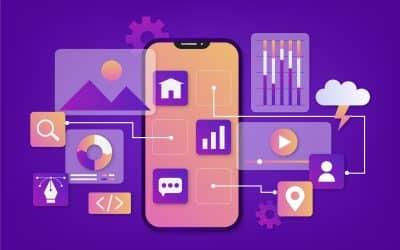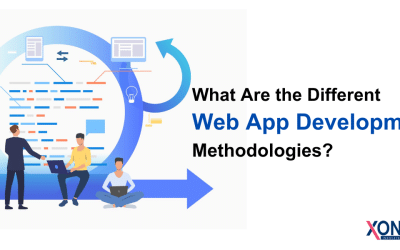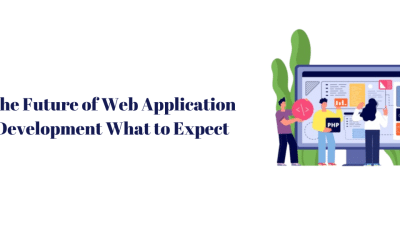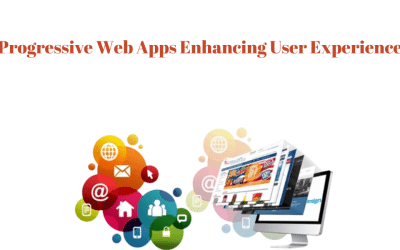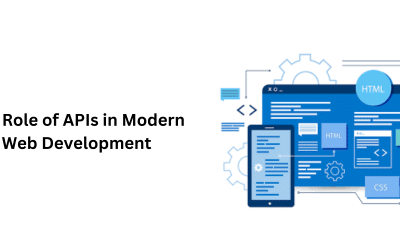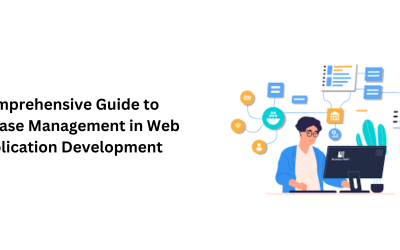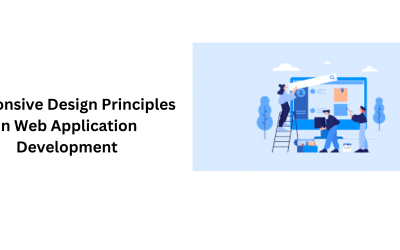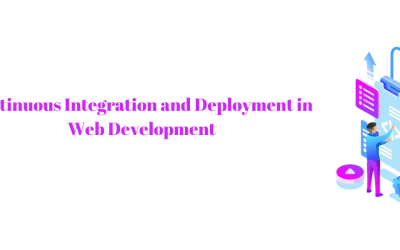Web-based software is likely to transform the world in 2025 because of the speedy advancements in technology and consumers’ changing requirements. Tools to develop web-based applications are likely to be a key element in shaping the future and making it simpler for developers to build safer, reliable, effective, and user-friendly apps.
The most significant of the anticipated changes is the speedy implementation of artificial intelligence and machine learning. These tools enhance the user experience with personalization of content and intelligent interfaces. They also help speed development by automatizing routine procedures, identifying issues, and improving effectiveness.
The number of people who utilize progressive web apps (PWAs) blurs the line between mobile and web apps. PWAs offer the advantage of providing users with an easy-to-use experience with browsers for web browsing. This proves that it is essential to use reliable web app development tools that can be cross-platform and offer an optimal experience on various devices.
In addition, the need for WebAssembly is anticipated to rise. This will allow developers to develop high-performance applications using languages such as JavaScript. This opens up the possibility of web development, making it more inclusive and adaptable.
Security will forever be a top concern for web developers who focus on creating more secure applications that can withstand the increasing attacks of hackers. Improved tools to develop web applications with advanced security will be essential, as they can ensure that applications are secure without altering the user’s experience or functionality.
History of Web Development
The background of advancement in the field of technology for the internet is an exciting trip that spans several decades. It is characterized by significant and rapid advancements in technology that have made internet usage the way that we utilize it today.
The initial steps to the World Wide Web can be found in 1989 when Sir Tim Berners Lee, a British researcher at CERN, devised a way of communicating information between CERN researchers. The system, which was later named “the” World Wide Web, was created around the idea of hypertext. It allows documents to be joined and accessible via websites. It was the year 1990 when Berners Leibniz created the first web browser, which was aptly named WorldWideWeb and became the first web-based server. It was the first step in the web development.
The 1990s saw the internet gain popularity. Marc Andreessen and Eric Bina of the National Center for Supercomputing Applications (NCSA) released the first web-based graphic software, Mosaic, in 1993. Mosaic was the first browser to open Web to anyone, allowing users to explore pictures and texts within the same web page. The invention led to Web’s growth and the emergence of Web development as a career.
The demand for web browsers grew after the launch of Netscape Navigator around 1994. Netscape brought several new features, such as cookies for managing sessions and JavaScript, which allowed scripting on the client and allowed web designers to design more dynamic and interactive websites. At the end of the 1990s, it was also the time to develop HTML (HyperText Markup Language) as the principal technique for designing websites. Then came the launch 1995 of HTML 2.0 in 1995, followed by HTML 3.2 in 1997. Every version added new features and capabilities.
The second part of the 1990s and the start of the 2000s was the time of the dot-com boom. This was an era of explosive growth in the development of web pages and the online business. The dot-com boom witnessed the rise of modern technology such as CSS (Cascading Style Sheets) to improve the look of websites and XML (eXtensible Markup Language) to transfer data. In this period, scripting languages that use servers such as PHP, ASP (Active Server Pages), and JSP (JavaServer Pages) were well-known and positioned to develop more sophisticated web-based interactive software.
The advent of HTML0 2.0 in the mid-point of 2000 changed the design of web-based websites, using web-based content that the user created and the usage of social networks and web-based interactive apps. Technologies like AJAX (Asynchronous JavaScript and XML) allow websites to refresh quickly without needing a full page refresh, resulting in a more efficient and quicker user experience. During this time, there was the introduction of CMS (content management systems) (CMS) such as WordPress, Joomla, and Drupal, which made the development of websites more efficient and more accessible to people who are not technical.
Since the past few years, the number of web-based apps has continued to grow thanks to the rapid growth of responsive mobile designs and advanced web apps (PWAs). Modern frameworks, libraries, and platforms such as React, Angular, and Vue.js have changed the methods designers use to design and maintain complex web-based applications. Furthermore, advancements in speed, security, accessibility, and speed have ensured that the web remains an essential and secure platform available for everyone.
Top Technologies in the Future of Web Development
The following section will examine some of the major technologies that will change the way of web application development over the next few years. This will be due to the development of artificial intelligence and machine learning. It will also lead to the development of innovative web-based software and applications, among other things.
Artificial Intelligence and Machine Learning
AI and Machine Learning (ML) are changing how websites are built by developing custom-designed, interactive, and intelligent sites. AI-powered chatbots offer customers 24/7 support, improving customer interaction and experience. Machine learning algorithms can analyze customer patterns and provide specific information and suggestions that will enhance user experience while increasing sales effectiveness.
Additionally, AI is being used to streamline various elements of web design. Tools such as Copilot, available on GitHub Copilot, use machine learning to aid developers with ideas to code components and automatize the process of working on code, thereby improving productivity and reducing the number of mistakes. As AI advances and integrates into web development and workflow, it will become more sophisticated and allow the creation of highly fluid and responsive web-based applications.
Progressive Web Apps (PWAs)
Progressive Web Apps (PWAs) are a new technique for web development that combines all the advantages of Web and mobile applications. They can be designed to work on any device with any internet-connected browser. They offer a superior user experience no matter what device. PWAs can be utilized offline using push notifications. They can be downloaded directly from the screen of home without the need for app stores.
The main advantages of using PWAs are better performance, reduced development costs, and an established codebase adaptable across different operating platforms. Companies such as Twitter, Starbucks, and Pinterest have all implemented PWAs that improve their customers’ effectiveness and involvement. As more businesses realize the advantages of PWAs, their use continues to expand, and their usage is predicted to increase, which makes PWAs a vital element in the technological advancements for the internet.
WebAssembly (Wasm)
WebAssembly (Wasm) is an instruction-based binary format that allows high-performance code execution in web browsers. It enables programmers to write code in programming languages such as C, C++, and Rust and later convert it to WebAssembly for use in the web browser. The result could be major performance enhancements, specifically when you are doing activities that require a lot of computational power such as gaming, video editing and even more sophisticated visualizing of information.
WebAssembly is specifically created to be compatible with JavaScript in conjunction with JavaScript and offers a beautiful alternative to traditional Web development methods. Its ability to provide near-native performance when used with the internet’s browser offers new ways to develop advanced and resource-intensive software. In the future, it’s clear that because WebAssembly grows in importance and expands its capabilities, it will emerge as a critical device for web developers seeking to expand the possibilities of the possibilities available to the web browser.
Single Page Applications (SPAs)
Single-page Applications (SPAs) are web-based programs that load one HTML page that is continuously updated by adding new content each time a user interacts with the application. This technique provides a quicker and a more pleasant experience over traditional multi-page websites which need a complete refresh of the pages each time a person visits the website.
SPAs employ techniques such as JavaScript frameworks (e.g., React, the Angular framework, and Vue.js) to manage the performance of apps and dynamically render their contents. This means faster loading times, improved efficiency, and better customer experiences. The need to develop highly interactive and practical web-based apps increases the importance of SPAs as an integral component in the next stage of the design of web-based applications.
Serverless Architecture
Serverless is an innovative technology for developing web applications that allow developers to write and publish their apps without the need to maintain server infrastructure. When using serverless technology, cloud-based service providers such as AWS, Google Cloud, and Azure can manage the server, allowing developers to concentrate on writing programs.
Serverless functions, referred to in the context of Function as a Service (FaaS), are event-driven and able to adapt to changing demands. This means that developers can save money since they pay only for the computer resources they utilize. It is easy to set up and has a lower expense as it decreases running costs and increases capabilities. This is an ideal choice in the future, especially for web-based development.
JAMstack
JAMstack (JavaScript APIs APIs APIs, Markup) is a revolutionary web-based development platform that is specifically made to distinguish between the frontend and the backend. It allows developers to create speedy, safe, solid, efficient, scalable, and reliable web-based applications and websites. With the JAMstack design, the frontend component is usually static and is served via the Content Delivery Network (CDN), and the dynamic Function is managed through APIs.
JAMstack’s benefits include increased performance, security, and a grander scale. Using static generators for websites and headless CMSs (Content Management Systems), developers can create top-quality online experiences. The JAMstack technique is becoming increasingly popular due to its easy application and effectiveness. This can be a significant enhancement in the coming decades of web design.
Motion UI
Motion UX is a trend in design. It concentrates on seamless transitions and animations for web-based apps to improve users’ satisfaction. With the rising focus on user experience (UI) along with the user experience (UX) as well as user experience (UX), creating motion-based user interfaces is increasingly becoming an essential aspect of today’s internet advancement.
With motion-based UI technologies, developers can create appealing user interfaces that include interactive elements to guide users through the application. Techniques such as parallax scrolling and animated transitions make Web-based applications more appealing and easier to use. As users’ expectations grow, interfaces based on motion are likely to increase in popularity for Web design.
GraphQL
GraphQL can be described as an API designed to let developers get the information they need. This makes it a more efficient and adaptable alternative to conventional APIs that support REST. With GraphQL clients, the user can define the format of their responses, resulting in less data fetching and less over-fetching.
One of the main benefits of GraphQL is the ability to enhance communication between the front and back end, which results in improved performance and better user interaction. Businesses like Facebook, GitHub, and Shopify have all adopted GraphQL and have demonstrated their capabilities in creating modern web-based apps. As the demands for efficient data retrieval systems grow, GraphQL is expected to be a norm for Web creation.
Blockchain Technology
Blockchain technology, recognized for its use in cryptocurrency, has helped discover new apps that could be employed to build websites. Distributed applications (dApps) built on blockchain technology can provide increased security by ensuring transparency and invariability, as well as the capability to make transparency. Blockchain The application can be utilized for many applications, like identification verification based on security as well as tracking supply chain logistics and supply chains, as well as other applications, such as the Financial Decentralization (DeFi) application.
Incorporating Blockchain technology in their web applications, web developers can make websites more secure and resistant to any changes. As the use of blockchain technology grows, its effect on website development will increase, creating new possibilities to improve and increase safety.
Augmented Reality (AR) and Virtual Reality (VR)
Augmented Reality (AR) and Virtual Reality (VR) are altering how web users use websites by giving an interactive and immersive user experience. AR adds digital data about the physical world, while VR builds entirely virtual realms.
In creating web-based applications, AR and VR can be utilized to develop various applications, such as virtual tests on eCommerce and virtual learning games, for teaching. Technologies such as WebXR (Web Extended Reality) aid in making it more efficient to integrate AR and VR experiences into web applications. As AR and VR develop and integrate more seamlessly into web-based apps, they will expand and offer new ways of interacting with customers.
Edge Computing
The phrase “edge” computing describes a way of computing that allows for computing and data storage close to where it’s necessary. This reduces the amount of time required to finish and increases performance. For web app development services the notion of edge computing could be used to create quicker and more efficient apps by processing data at the edges, which is close to the user.
Using edge computing, developers can design applications with fast processing speed in real-time and low-latency communication. This is vital for apps that require quick response times for streaming videos, gaming online, and IoT (Internet of Things) applications. As the need for speedier and more effective web-based applications rises and the demand for cutting-edge computing expands, it’s anticipated to have an integral impact when developing web-based applications in the next couple of years.
Cybersecurity Enhancements
In light of the increasing number of cyber-attacks, security is becoming an essential aspect of creating websites. Web applications in the near future must include sophisticated security measures to safeguard users’ personal data and maintain customers’ trust.
Techniques such as AI and machine learning can be employed to spot security problems quickly. In addition, security measures such as safe programming methods such as encryption and multi-factor authentication will become essential for securing applications built on the internet. As cyber-attacks grow more frequent, the significance of the security of web-based development will increase and eventually lead to the development of safer security software.
Trends in the Future of Web Development in 2025
In 2025, various important trends will revolutionize the way web application development company build and maintain websites, ensuring that they are more secure, effective, user-friendly, and efficient than they were before.
Progressive Web Apps (PWAs)
Progressive Web Apps (PWAs) have gained popularity in the past few years and are expected to grow in popularity until 2025. PWAs provide users with an experience that is seamless, similar to native mobile apps since they do not need to download all their content from the app store. Additionally, they offer offline functionality and speedy loading times. These are important elements that increase user engagement and retention.
The growth of PWAs is fueled by the need to provide more responsive and secure web-based applications. With better performance and the ability to work offline, PWAs can reduce the level of friction that prevents users from using online applications. In 2025, the expectation is that the majority of companies will use PWAs to satisfy customers’ requirements and offer an easier, smoother, and more enjoyable browsing experience.
Artificial Intelligence and Machine Learning Integration
AI and Machine Learning (ML) are revolutionizing the way web-based applications function and interact with users who utilize them. In 2025, it is expected that the incorporation of AI and Machine Learning into the development of web-based apps will be significantly higher-end and offer personal user experiences while automating complicated tasks.
AI-powered virtual Assistants and chatbots will likely become standard elements in applications that run on the web, providing 24-hour assistance to customers and increasing user interaction. Additionally, AI algorithms can help study user behavior, providing specific recommendations for products, information, and user-friendly interfaces that may be customized to meet the specific needs of the users.
Single Page Applications (SPAs)
Single-page apps (SPAs) will be at the forefront of the development of applications that run on the web to their capacity to give users an incredibly dynamic and fluid experience. They load just one HTML webpage and continually refresh the content when the user interacts with the application, which means there’s no requirement to load pages repeatedly, boosting efficiency.
Technologies like React, Angular, and Vue.js aid in making the development of SPAs faster and more effective. In 2025, the frameworks are expected to evolve further and have more advanced features and capabilities that will enable the development of extremely interactive and user-friendly Web-based apps.
Serverless Architecture
Serverless design is changing the way developers design and develop web-based applications. This method eliminates the server management requirement and lets developers concentrate on writing code. By using cloud-based solutions such as AWS Lambda, Google Cloud Functions, and Azure Functions, Developers can develop software with a flexible design that will instantly adapt to users’ demands.
Serverless technologies are predicted to become more widespread through the use of improved software and assistance from top cloud-based service providers. This will result in faster development times, lower operating costs, and more capacity for web-based applications.
WebAssembly
WebAssembly (Wasm) WebAssembly (Wasm) is an instruction format used in binary code that allows the execution of high-performance software inside web browsers. Developers can create code in languages such as C, C++, and Rust that can be converted into WebAssembly codes that run at a speed comparable to the native.
By 2025, HTML0 WebAssembly could contribute to creating web-based applications specifically for apps that require significant amounts of computing, like games and video editing software and even scientific simulations. The ability to run code fast and effectively opens up opportunities for web-based software, making them faster and more powerful than ever.
Enhanced Security Measures
The risk of cybercrime grows, as do the security features implemented by web-based applications. We’ll witness the most sophisticated security techniques and protocols becoming vital components in custom web app development solutions. Techniques like multi-factor authentication (MFA), biometric authentication, and advanced encryption are predicted to be more widespread in protecting user data and ensuring secure access.
Furthermore, the rise of quantum computing poses new challenges as well as opportunities for web security. Quantum computers are capable of piercing traditional encryption strategies, but they also have new strategies to protect data. Quantum-resistant algorithms and encryption methods are expected to be vital in securing sites from cyber attacks in the near future.
Voice Search Optimization
With the rise of gadgets that can be activated through voice input, including Amazon Alexa, Google Home, and Apple Siri, Apple Siri Voice search is becoming a crucial aspect of communication with people on the web. By 2025, increasing the quality of applications online that can use voice activation will be crucial in order to stay useful and available.
Developers must focus on natural processing (NLP) and interpreting questions asked during conversations to ensure that their apps can respond to commands made using voice. This will result in more user-friendly and intuitive applications that can adapt to the growing number of users using Google voice search.
Motion UI
Motion UI refers to the application of animations and changes to improve the users’ experience when using Web-based apps. By 2025, the motion user interface will become a common method for Web design and provide users with an engaging and fun user experience.
Animations can assist those who are online in displaying vital information and providing a pleasant experience. With advances made using CSS and JavaScript, the implementation of motion-based UIs is much simpler and more efficient. This allows designers to design visually appealing web pages.
Internet of Things (IoT) Integration
The Internet of Things (IoT) is rapidly growing, and there’s an more connected devices connecting to the internet every single day. In 2025, IoT integration between IoT and web-based applications is expected to become more commonplace and enable seamless connectivity between web-based platforms and IoT equipment.
The technology will enable web-based applications to analyze and collect information from various sensors and devices, delivering rapid insights that make processes more effective. For example, smart home apps can manage heating, lighting, and security systems via Web-based interfaces. This makes everyday tasks simpler and more effective for users.
JAMstack Architecture
JAMstack (JavaScript APIs as well as JAMstack Markup APIs JAMstack Markup as well as JAMstack) Markup) Style is receiving increasing recognition for its ability to offer rapid and secure applications on the web. JAMstack provides increased speed, capacity, and security by separating the front and back end.
In 2025, JAMstack will become a common method of developing web-based apps specifically designed for static websites and other apps that rely heavily on data. Using static generators for websites, headless CMSs, and API-driven development could speed up development and create a solid basis for web-based apps.
Ethical and Inclusive Design
As websites increasingly integrate into our daily lives, more emphasis is placed on the solid and ethically designed development of web-based apps. In 2025, developers will be conscious of developing applications open to anyone, no matter their skills or experience.
A new trend is conforming to web accessibility standards (such as WCAG) and weighing ethical issues that affect the design of web applications. Be sure that your web applications are available to all users and that they don’t restrict their use to a certain type of user. This is essential to the design process.
What is the Impact of AI on Web Development?
The profound impact of AI in web development is enhancing the development process to change user interaction more.
Evolution of Web Development
To understand the impact of AI, It is essential to follow the development of web technology:
- Web pages that were static in the beginning to dynamic websites driven by content.
- Frameworks as well as libraries like JQuery, AngularJS, and React are announced.
- A shift towards responsive design and mobile-first methods.
AI-Powered Development Tools
- AI has dramatically simplified the process of developing websites:
- AI algorithms can create code using designs, thus reducing the time to develop.
- Tools for testing powered by AI can detect bugs and improve efficiency more effectively than traditional methods.
- AI enables personalized user experiences via data analysis and algorithms for prediction.
Enhanced User Experience
AI is changing the way that people interact with websites
- Chatbots, Virtual Assistants: Powered by AI provide immediate customer service and increase customer engagement.
- Personalization for content: AI analyzes user habits to present specific content suggestions.
- Vocal Search Optimization: AI helps optimize websites to respond to voice searches, improving accessibility.
AI and Responsive Design
AI plays an essential role in designing responsive web pages:
- Flexible Layouts: AI algorithms can alter website layouts based on users’ preferences and their devices’ capabilities.
- Efficiency Optimization: AI analyzes traffic patterns to optimize the performance of websites and load speeds continuously.
AI in SEO and Content Creation
AI technologies are changing SEO strategies as well as content creation:
- Keyword optimization: AI tools analyze search trends and optimize web pages to increase search engine results.
- Automated Content creation: AI can generate articles, such as product descriptions or news items, based on specific inputs and guidelines.
Challenges and Ethical Considerations
However, despite its advantages, AI is a problem in web development. Issues:
- Security Dangers: Artificial Intelligence-driven systems could be vulnerable to cyber-attacks as well as breaches of data.
- Ethics: Concerns about AI bias, privacy and data, and ethical consequences of decision-making by machines.
- Skills Deficits: AI adoption requires web developers to learn new abilities and be able to adapt to the latest technology.
Future Trends and Innovations
The future of AI in web development is promising
- Artificially-Driven Design Tool: Advanced AI tools are expected to streamline the design and development process further.
- Improved User Interfaces: AI will continue to develop more efficient user interfaces, creating more user-friendly websites.
- AI-powered: Analytics are advanced tools that use AI to offer deeper insight into user behavior and web performance.
How Web Application Development Helps Grow Your Business
The design and development of web-based applications can provide various advantages that could significantly aid in business growth. This paper explains how application development can help businesses expand by improving the customer experience, improving operational efficiency, and providing important data insights, improving scalability, giving businesses an edge.
Improving Customer Engagement
One of the main ways that web application development can aid in business growth is increased customer interaction. Web-based applications are a way for companies to connect with customers more efficiently and effectively. The applications are designed to deliver personalized experiences, which will increase customers’ satisfaction and loyalty.
- Personalized User Experience: Web-based applications can modify content and services to satisfy the demands and preferences of specific users. Utilizing information analytics and behavior tracking, companies can give users personalized recommendations, discounts, and content. This personalized approach could result in increased customer retention and higher conversion rates.
- Usability and Convenience: Web-based applications are accessible to any device with an internet connection. This allows clients to interact with the company at any time and from any location. The ease of use could significantly enhance customer satisfaction and encourage customers to return to business.
- Interactive features: Web-based apps can integrate interactive features like chatbots, forums, and feedback forms. They can provide real-time messaging and support. These features can increase customer satisfaction and create better relationships between businesses and their clients.
Increasing Operational Efficiency
The development of Web applications can result in improved operational efficiency by automating various routine business operations and streamlining workflow. Efficiency can translate into reduced costs and greater efficiency, leading to more significant business expansion.
- Automating repetitive tasks: Web-based apps allow the automated routine tasks such as the entry of data, managing inventory as well as the processing of orders. Automation reduces the requirement for manual labor, reduces the chance of errors, and frees employees to work on strategic work.
- Integration with Other Systems: Web applications can be incorporated with different business applications, such as customer Relationship Management (CRM) software, Enterprise Resource Planning (ERP) systems, and accounting software. This allows smooth data flows across various departments while reducing redundant data and increasing overall efficiency.
- Centralized Data Management: Web applications are centralized systems that store and manage information. Centralization of data ensures that every team member has access to the most current information, allowing for better decision-making and collaboration across the company.
Providing Valuable Data Insights
Data is an essential resource for every business. Web applications aid in collecting, analyzing, and using data for business development. By using web-based apps, companies can gain insight into their customers’ behaviors, market trends, and operational efficiency.
- Customer behavior analysis Web-based applications can monitor user interaction with their preferences and buying patterns. By analyzing these data, businesses can detect patterns, identify customer preferences, and customize their products or services to meet them. This information can help develop better marketing strategies and create products.
- Measures of Performance Web applications may offer real-time performance indicators, including web traffic, conversion rates, and user engagement levels. This helps companies track their progress, identify areas that need improvement and assess the efficacy of the strategies.
- Data-driven decision-making: By having access to the vastest data-driven insights, organizations can make informed choices based on scientific evidence rather than intuition. The data-driven method can help improve strategy and improve the probability of reaching business goals.
Enhancing Scalability
Scalability is an essential factor in business expansion. Web applications provide the capability to scale up operations when needed. If a company is looking to expand its client base, establish new markets, or introduce new products, web-based applications will help support the development effectively.
- Flexible infrastructure: Web applications are generally built using scalable infrastructures like cloud-based platforms. These platforms let businesses alter their resources in response to demand and ensure that they can handle an increase in transactions and traffic without degrading performance.
- Modular design: Many web-based applications have modular designs, making it simpler to incorporate additional features and functions as businesses expand. The web’s modularity allows companies to quickly respond to market trends and customer demands.
- Global reach: Web applications permit enterprises to communicate with a global public without needing a physical presence in multiple places. The web’s global reach can open doors to new revenue streams, grow the base of customers, and contribute to a significant increase in business expansion.
Offering a Competitive Edge
In today’s highly competitive business world, the best web applications can give you a competitive advantage. Businesses can use them to differentiate themselves from competitors and attract more clients.
- Innovation and differentiation: of an adequately designed web application will showcase an organization’s distinct value propositions and unique services. Through providing exceptional user experience and advanced capabilities, businesses will stand out in the marketplace and draw many more clients.
- Speed to market: Web-based applications can help speed up product launches and updates. Their flexibility allows companies to respond quickly to market trends, launch new services or products, and keep ahead of competitors.
- Enhanced customer support: Web-based apps can provide customers with better customer service with tools like live chat, auto answers, and comprehensive FAQs. Excellent customer support could increase customer satisfaction and loyalty, giving businesses an advantage over their competitors.
Case Studies
To illustrate the effect of developing web-based applications on the growth of businesses, we’ll look at a couple of case studies:
- Amazon: Amazon’s growth is due to its robust web-based application that offers individualized recommendations, seamless transactions, and outstanding customer service. Its capacity to scale and data-driven method have helped Amazon expand rapidly and grow into a world-class e-commerce company.
- Netflix: Netflix uses web-based application development to deliver a personalized experience for viewers. By analyzing user information and preferences, Netflix can recommend content that keeps viewers entertained. This personalized approach has allowed Netflix to retain a loyal user base and grow its global market share.
- Slack: The web-based application, revolutionized communication in the workplace by delivering an integrated platform for communication, file sharing, and collaboration. Its user-friendly interface and integrated capabilities make it an extremely popular option for companies, which has contributed to Slack’s rapid growth and expansion of its market.
Conclusion
Looking ahead to 2025 and even beyond that point, the field of web app development will undergo significant changes driven by technological advances and changing user expectations. Artificial intelligence (AI) and machine learning (ML) in web apps are expected to become more commonplace, providing personalized user experiences and advanced predictive analytics. Furthermore, the growth of Progressive Web Apps (PWAs) will continue to blur the boundaries between native and web-based apps, delivering improved performance and offline capabilities.
The rising popularity of microservices will enable developers to create robust and reliable applications. This strategy will be further supported by the continuing expansion of orchestration and containerization instruments such as Docker and Kubernetes, which will streamline deployment and management operations. Additionally, the focus on cybersecurity is expected to increase as developers implement modern security tools to guard sensitive data and ensure compliance with strict laws.
What’s to come from web-based app development will also be determined by the development of frameworks for front-end development and libraries. Advances in technology like React, Angular, and Vue.js will lead to the creation of dynamic and responsive user interfaces. Parallel to this, the push towards accessibility and inclusiveness will result in websites catering to a wider variety of users, such as those who are disabled.
Additionally, the rise of 5G networks will transform the mobile web experience, providing quicker load times and unhindered connections. The increasing popularity of serverless computing will permit developers to create highly efficient and affordable applications.
FAQs
What are the most critical technologies that will shape the future of web app development?
Essential technologies include Artificial Intelligence (AI) and Machine Learning (ML) for customized user experience, Progressive Web Apps (PWAs) for improved mobile accessibility, WebAssembly for near-native performance, and the ongoing advancement of JavaScript frameworks, such as React, Angular, and Vue.js. Furthermore, technology like 5G and beyond AR, augmented reality (AR), VR, virtual reality (VR), and blockchain technology will significantly impact the web’s development.
How will AI and ML impact web application creation in the coming years?
AI and ML can enable more efficient and highly personalized websites by analyzing user behavior, preferences, and interactions. This will result in improved customer experiences, better chatbots and predictive analytics, automated content generation, and enhanced security thanks to sophisticated security detection.
What role do Progressive Web Apps (PWAs) have shortly after development for web applications?
PWAs will always connect mobile and web apps by providing a quick, efficient, reliable, and enjoyable user experience. They’ll be essential in providing high-performance applications that include offline functionality, push notifications, and effortless updates, making PWAs a popular option for many businesses.
What impact will WebAssembly have on the development of web-based applications?
WebAssembly will let developers run their high-performance applications through the Internet. This will allow applications that require a lot of computation, such as games, video editing, and scientific simulations. It will open up new avenues for web-based applications. It will allow software written in several languages to run efficiently through the browser.
What are the latest developments we can expect regarding web-based application security?
Security will remain an important issue, thanks to technological advancements in encryption, multi-factor authentication, and AI-driven security methods. Future web apps will utilize more advanced methods to combat threats and ensure that user information and privacy are better secured.
What will happen when the advent of AR and VR affects the development of websites?
AR and VR provide an immersive and interactive experience directly in internet browsers. By offering users real-time and engaging interaction with digital content, they will transform industries such as real estate, e-commerce, education, entertainment, and more.
What changes are developers likely to see about frameworks and tools?
Developers will experience continuous improvement and new versions of popular frameworks such as React, Angular, and Vue.js that offer better speed, more efficient development, and enhanced capabilities. In addition, new platforms and tools are set to be developed that simplify the development process, increase collaboration, and streamline routine chores.
How will the impact of 5G and future technology for networks affect web apps?
The introduction of 5G and the next generation of network technology can result in significantly higher speeds for internet connectivity and lower latency. This will make it easier to build more complicated and data-intensive web applications, enhance real-time interaction, and improve the efficiency of services streaming, IoT applications, and cloud-based services.



